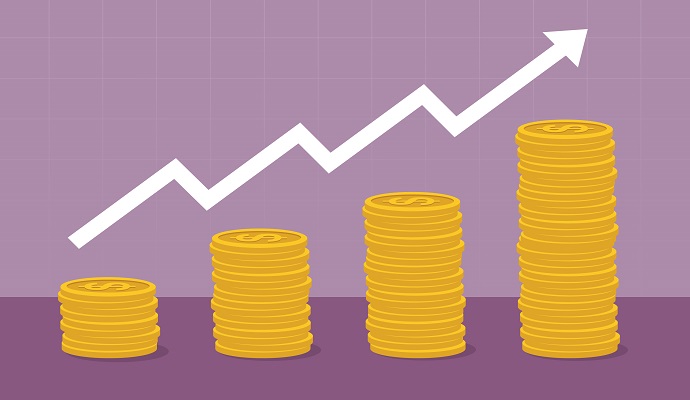National Healthcare Spending to Climb to 19.7% of GDP by 2028
New estimates from the Office of the Actuary at CMS show that national healthcare spending is slated to grow by 5.4% annually from 2019-28 but those projections do not account for COVID-19.

Source: Getty Images
- Researchers at the Office of the Actuary at CMS project national healthcare spending to grow at an average annual rate of 5.4 percent from 2019 through 2018, outpacing the average projected growth in gross domestic product (GDP) by 1.1 percentage points.
As a result, the healthcare share of the economy is slated to increase to 19.7 percent of GDP by the end of the period, up from 17.7 percent in 2018, the estimates shared in a study published in Health Affairs yesterday showed.
“As it has over the past several decades, health spending is expected to grow, on average, more rapidly than the rest of the economy,” Sean Keehan, an economist in the Office of the Actuary at CMS and lead author of the Health Affairs study, stated in a press release.
The previous projections from CMS actuaries predicted national healthcare spending to increase 5.5 percent annually from 2018 through 2027, with healthcare accounting for about 19 percent of GDP by the end of the period.
The most recent projections show a slight slow down in healthcare spending – which may be due to a variety of factors, including value-based purchasing and payment parity rules – but it may not be the case in light of the recent COVID-19 outbreak.
There are over 436,000 confirmed cases of COVID-19 worldwide, including more than 55,200 cases in the US, according to data from Johns Hopkins University at the time of publication. Infectious disease experts have estimated more than 96 million cases to hit the US during the pandemic, and hospitals are already fearing significant financial losses stemming from testing and treatment of the rapidly spreading virus.
The projections from CMS actuaries did not account for what they called “the highly uncertain impacts of the COVID-19 pandemic over the projection period.” The data also did not take into account current-law framework and potential legislative changes, researchers warned.
However, the estimates confirm that healthcare spending is still on an unsustainable trajectory.
The significant increase in national healthcare spending will be driven by higher prices, CMS actuaries predicted in its latest study. In the new study, they reported an expected rebound in the prices for medical services and goods, as measured by the Personal Health Care Price Index.
The actuaries anticipate personal healthcare prices to rise at an average rate of 2.4 percent from 2019 through 2028, accounting for 43 percent of total projected growth in personal healthcare spending over the period.
“This acceleration in price growth largely reflects faster expected growth in health-sector wages and follows the unusually slow rate of personal health care inflation observed in 2014-18, when price growth for medical goods and services was 1.2 percent and represented 25.0 percent of expenditure growth,” CMS actuaries stated.
Meanwhile, growth in use and intensity is set to represent about a third of total healthcare spending growth. Population growth and changing demographics will account for the remainder of the projected growth, CMS actuaries reported.
During the period, hospital spending will continue to grow. In 2019, CMS actuaries predicted hospital spending growth to have increased by 5.1 percent in 2019, to total $1.3 trillion. By the 2021 to 2023 period, actuaries estimated growth to average 5.9 percent per year.
Spending growth for physician and clinical services will also increase during the period, the study showed. Spending on these services is slated to rise to 4.8 percent in 2020, up from 4.4 percent in 2019. This is “partly due to faster growth in use and intensity for private health insurance enrollees,” the actuaries stated.
However, Medicare will represent the majority of this spending, the study also found. Average annual Medicare spending growth (7.6 percent) is set to outpace that of Medicaid (5.5 percent) and commercial payers (4.8 percent).
Medicare spending will continue to grow more rapidly as enrollment surges, the study indicated.
“The government is projected to pay a larger share (nearly half) of the nation’s total health bill by 2028, as the baby boomers continue aging into Medicare and the program’s beneficiaries consume $1 out of every $4 spent on health care,” Keehan stated. “Policy makers and other stakeholders will undoubtedly continue to monitor these trends and their implications for the health sector, federal and state budgets, and the economy as a whole.”
Enrollment in private health insurance plans is also expected to slow during the period, following the recent trend of the working-age population enrolling in private plans primarily through their employers at lower rates.
Overall, CMS actuaries expect the insured portion of the population to decline modestly from 90.6 percent in 2018 to 89.4 percent in 2028.
